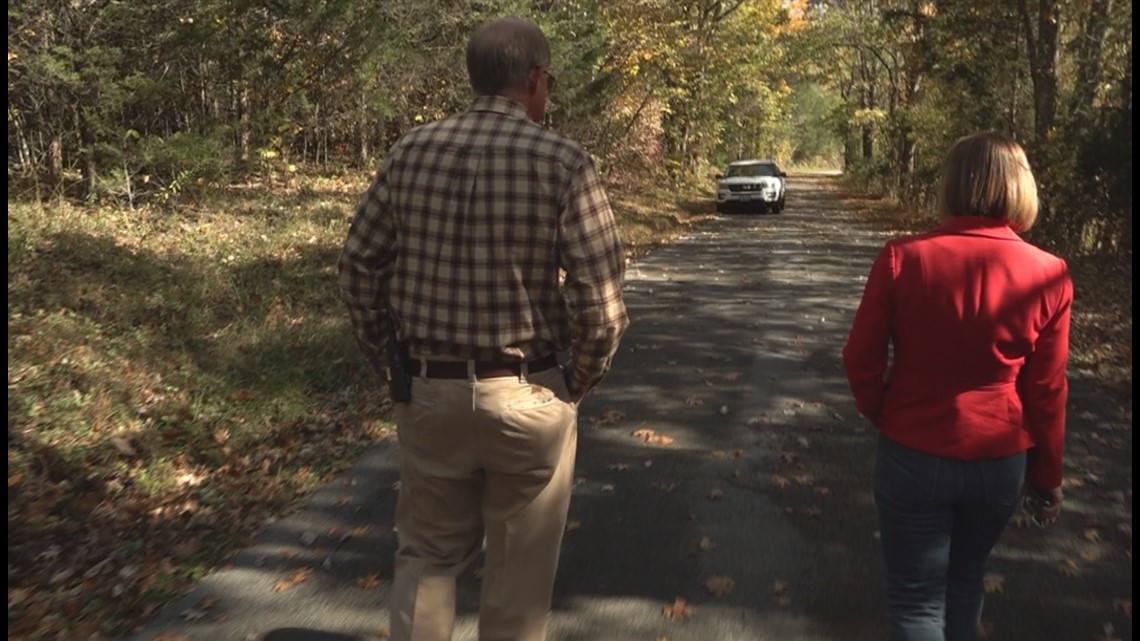RUTLEDGE, Tenn. — With its abundant gullies, hills, forests and thickets, East Tennessee offers thousands of places to dump a body. In the summer of 1996, a killer knew exactly what to do with Brenda Clark.
Someone taped together a large cardboard box and left her in it some 400 feet off a remote mountain road in the Powder Springs area of Grainger County.
She rested there in thick woods for weeks until hunters found her the afternoon of Sept. 29, 1996.
The location has proved to be one of the few clues in the killing of the 38-year-old Knoxville woman.
For more than 20 years, investigators didn't even know who the victim was. They just knew her as the woman in the box who wore green shorts.
It was only after solid, genetic confirmation came this August that the Tennessee Bureau of Investigation and the Grainger County Sheriff's Office could begin a homicide investigation in earnest.
Who killed Brenda Clark? Law enforcement has just started to answer that question. They're glad they finally can say who she was.
Patience, diligence, leaps in science and the serendipity of having a twin sister all helped identify Clark. The TBI hopes the public will help them finish the job and catch the killer -- or killers -- who left her in that taped-up box all those years ago.
"Every person deserves to have their name back," said Tennessee Bureau of Investigation Special Agent Brandon Elkins, who is working the Clark case. "Every family deserves to have closure."

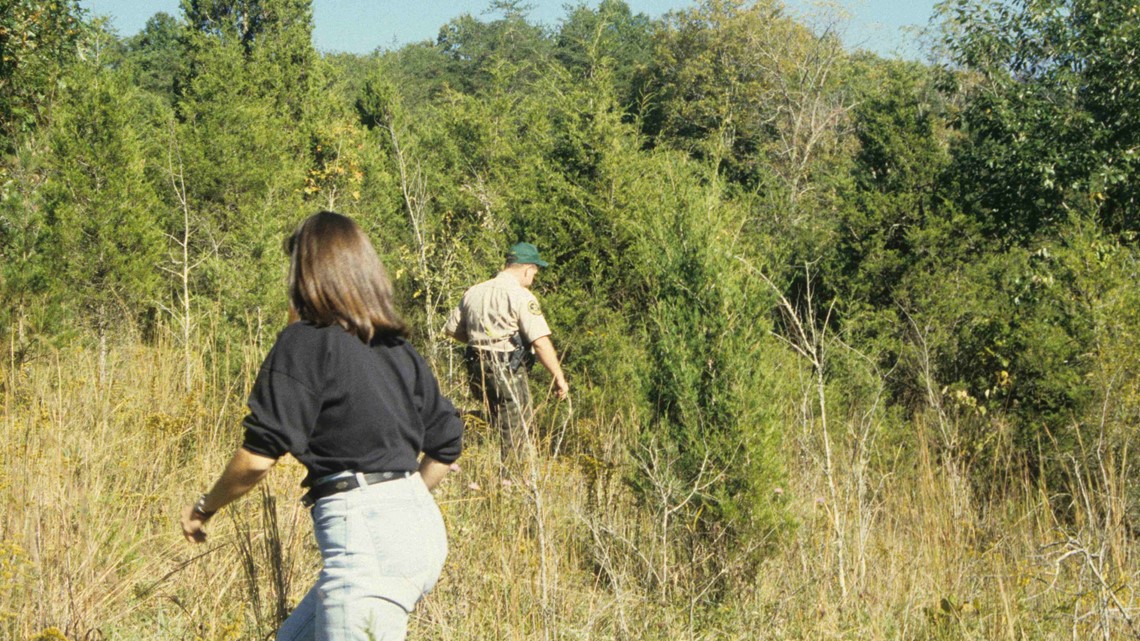
'IT WAS WELL-THOUGHT-OUT'
Grainger County Sheriff James Harville remembers the day in 1996 he got the call. He was a young deputy back then out on patrol in the rural county of about 18,000 northeast of Knoxville.
Jail dispatchers told him to drive out to Dale Road down from Joppa Mountain to meet hunters. They'd found a body. It was bad.
Harville parked along the road, passed a gate and trudged back to what the hunters had found.
There she was.
"It was like a big-sized box, like a stove or a refrigerator, that type of bigger box," he recalled last month for WBIR from the scene.
The Tennessee Bureau of Investigation, Fourth Judicial District Criminal Investigator David Hutchison and a forensic team from the University of Tennessee Anthropology Department headed out to the scene.
Most of the woman's remains were in the box, consisting of bones and some mummified flesh. Within 50 feet of it, anthropologists found bones likely scattered by animals -- teeth and fingers.
"It was just left there," Hutchison said. "But it was well off the road."


She'd likely been there for weeks, if not months. A forensic exam suggested she was 30 to 40 years old.
It's logical to think more than one person was involved in discarding the victim, and they likely used a vehicle to get to Dale Road, Hutchison said.
As small-town as Grainger County is, very few people go missing there, and very few people are slain.
The way investigators saw it, the woman probably was a Grainger County resident named Glenda Fields, 37, of Bean Station, who vanished in 1993 under suspicious circumstances. They operated, in fact, under that assumption.
They certainly had no reason to think this woman was from Knoxville.
DNA science wasn't anywhere near as advanced as it is today. Still, authorities took a sample from Fields' twin brother, sent it off and crossed their fingers.
But it wasn't to be. When the results came back months later they were disappointed to learn the woman in the box wasn't Fields after all, Hutchison said.
They were no closer to finding Fields, who remains missing to this day. And now they had this mystery --- who was this victim, this Jane Doe?

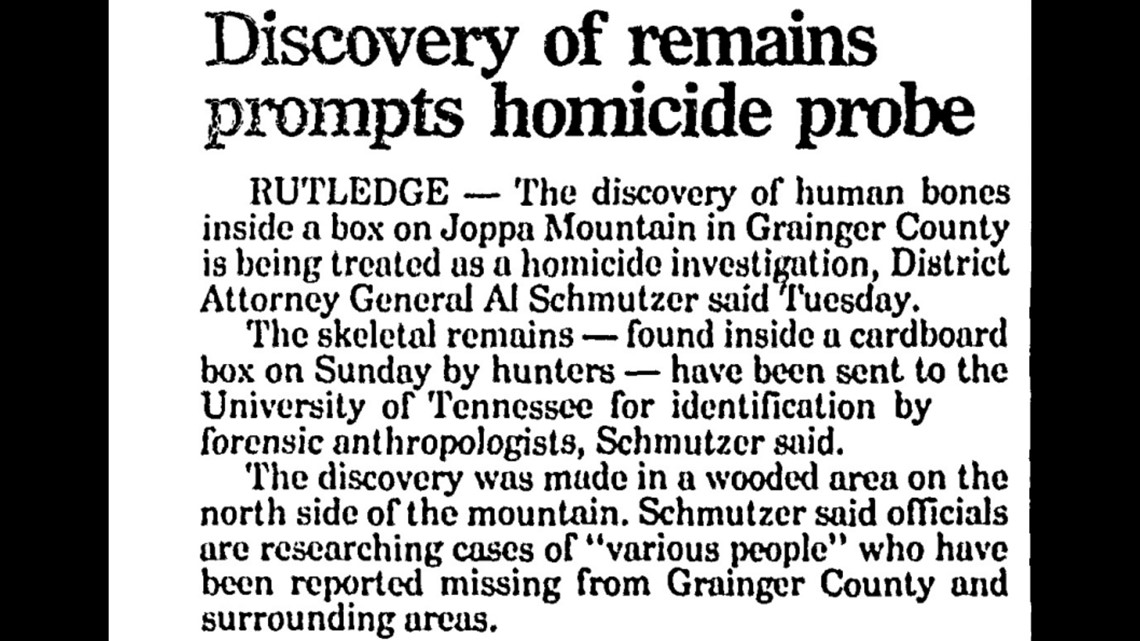
"More or less, we had another homicide at that point," Hutchison recalled.
The UT Anthropology Department kept Jane Doe's remains. They do that with unidentified remains they've studied through the years, hoping they'll some day get a break.
The killer did leave investigators one great clue by leaving the victim in that remote spot far from regular traffic. But they had little else to go on.
"Whoever put this body there knew the area or had been from the area," Harville said. "So it was well thought out."
It'd be more than 20 years before investigators finally caught a break.
It came thanks to advances in science in the 2000s and 2010s and a twist no one had considered -- the victim had a twin sister.

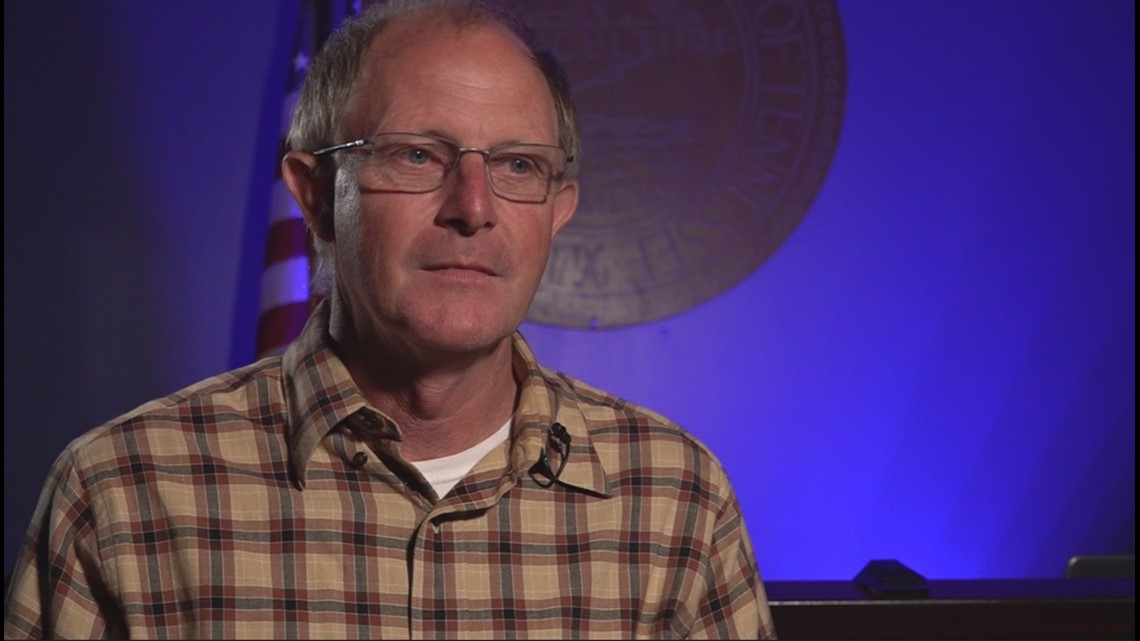
GENETIC JOLT
It's extraordinary what DNA science can do today.
Labs have far more ways to test tiny genetic samples, and there's a large and growing digital database available to law enforcement that contains a storehouse of human DNA information by which unknown remains can be compared.
Samples that previously yielded nothing now can reveal clues to a person's identity. Just this summer, the private Othram laboratory in The Woodlands, Texas, was able to figure out the identity of a 15-year-old Indiana girl whose bones were found in 1985 on a mountain in Campbell County. Past forensic efforts had all failed; what material was left for testing was pretty minuscule.
It seems counter-intuitive but when it comes to cold criminal cases, time actually can prove a friend. Sometimes investigators just have to be patient until the science catches up.
Such was the case with the bones in the box. The TBI hadn't forgotten about her, Elkins said.
In 2018, Special Agent Nick Brown sent a sample from the woman's remains to the University of North Texas Center for Human Identification in Fort Worth. It's a center that specializes in forensic genetic and anthropological exams to help police and researchers solve crimes and identify missing people nationwide. The center also works with the National Missing and Unidentified Persons System, or NamUS, a clearinghouse for missing, unidentified, and unclaimed person cases across the United States.
A digital profile then was created and uploaded to what's called the Combined DNA Index System, or CODIS. It's a database of DNA information that can be compared with unidentified remains to hopefully piece together enough clues and genetic similarities to make a match.
In 2019, the TBI got word there'd been a match to Jane Doe's remains off Dale Road. But it wasn't what everyone expected.

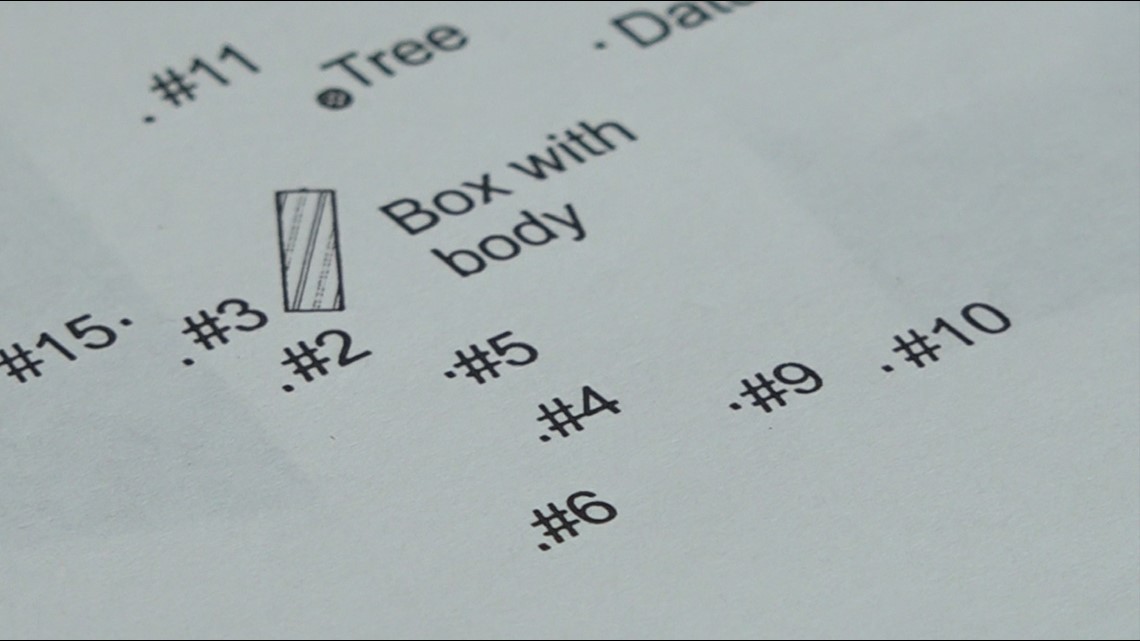
The DNA they'd submitted matched that of a woman who was alive and living in Knoxville. But how could that be? Their victim was dead.
How could the database already have her DNA profile?
"That's not something that happens a lot," said Elkins, an investigator of nearly 18 years who by now had taken over the case.
After getting over the initial shock, investigators had to ask themselves, did the Grainger County victim have a sister?
"The first reaction in cases like this is, We trust the science. DNA doesn't typically get it wrong," the agent said.
With further work, authorities were able to identify the woman whose DNA already happened by fortune to be in the CODIS system. And they learned that she had a twin -- 38-year-old Brenda Clark -- who disappeared in 1996 and was never heard from again, Elkins said.
TBI forensic scientist Kim Lowe worked with North Texas and NamUs to further study Jane Doe's sample with that of samples from the Knoxville twin and another family member. Lowe's body of work has included identifying genetic material recovered from the West Knox County home where Joel Guy murdered and cut up his parents and tried to dissolve them in chemcials over Thanksgiving 2016.
In August, authorities could confidently announce that Brenda Clark was the unidentified victim. After 26 years, it was a triumph.
"I don't think there's any better feeling," Elkins said.

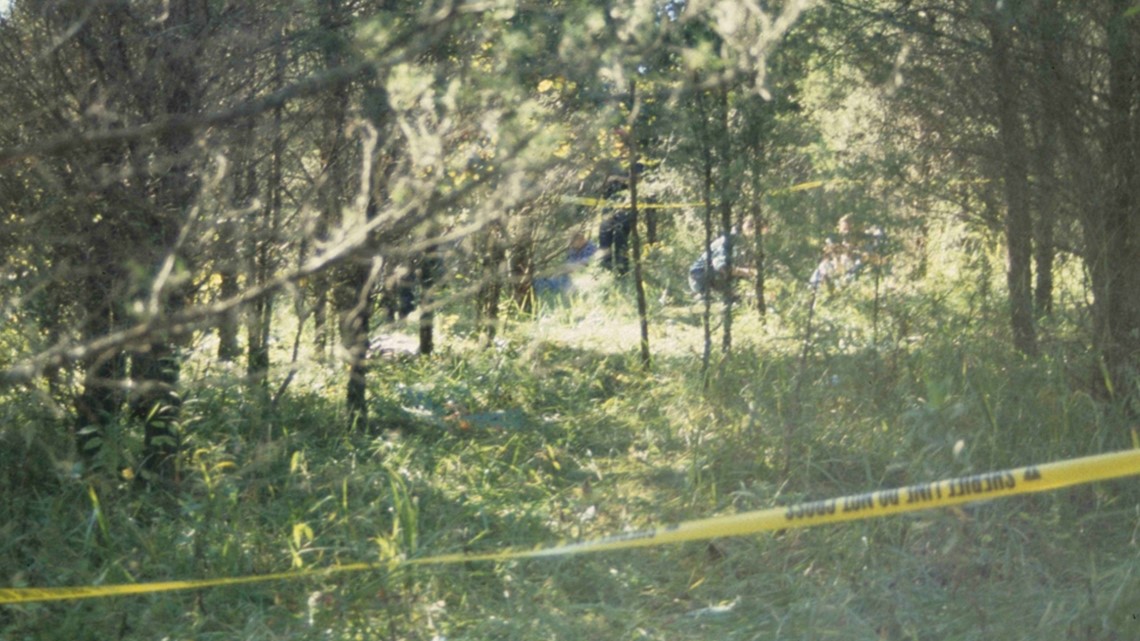
FINDING THE KILLER
In the weeks since they confirmed Clark's identity, the TBI has shifted to trying to figure out just who killed her.
Hutchison said the investigation revealed possible suspects at the time. He declined to be specific, but he said he thinks those people are still alive.
Elkins said the TBI now is looking at Clark's background, what was happening in her life at the time she disappeared, who she was known to associate with and what could have led to her ending up in Grainger County.
The agent said she was a mom "who was very well known, had a lot of friends in the area" and who had a lot of people "who cared a great deal for her."
Efforts to reach her family were unsuccessful.
Evidence at the scene including the location of the box shows she was a homicide victim. Clark was left in what amounted to a "clandestine grave," Elkins said.
Investigators have gone back to the beginning, looking anew at the case file created in 1996.
"Statistics show that most of the time the killer is in the first few reports. They're named. We just don't know it," Elkins said.

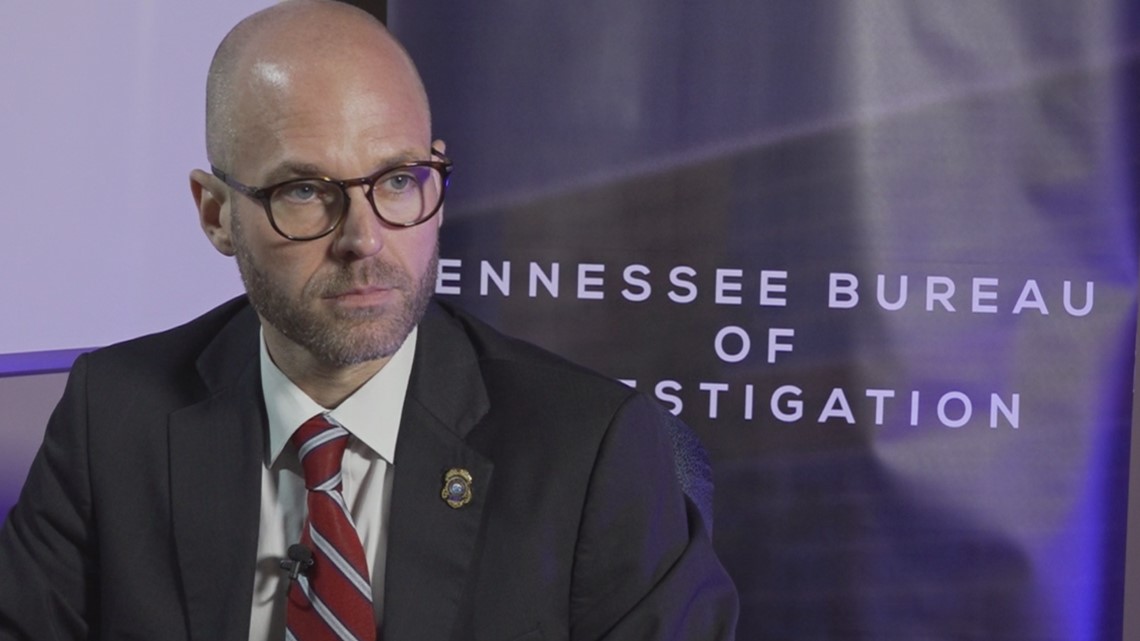
The crime itself could have happened in another county, Sheriff Harville said.
"This was just a spot to dispose of the body, from all indications, maybe," he said.
The TBI and Grainger County are asking for the public's help in gathering everything they can about Clark. Someone, or maybe many people, know details about her and what happened that could help solvie the case.
Even what may seem like a simple piece of information --- a bit of conversation uttered by someone over the years -- could prove to be a key clue in finding whoever left Clark out in the woods.
The TBI asks that the public call with tips through 1-800-TBI-FIND or send information through this email address -- tipstotbi@tbi.gov.
"It might take a little while, but I look for a solution to it, yes," Hutchison said. "We're not giving up, and we're better off than we have been. At least we have some closure for Miss Clark's family."
Said the sheriff: "My condolences go out to the family."
Elkins thinks investigators have time on their side. The evolution of science has already helped them figure out Clark's identity.
"Relationships change, technology changes," he said.
Now maybe someone is willing to talk.

